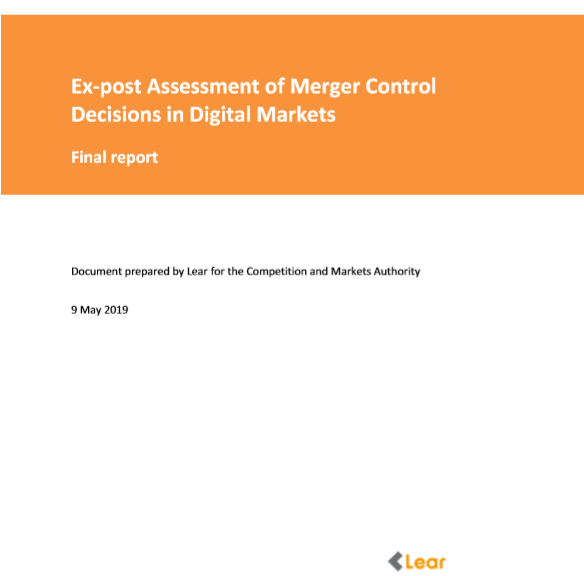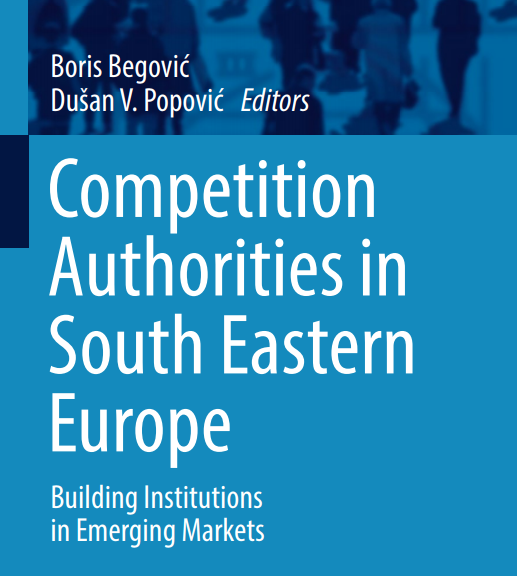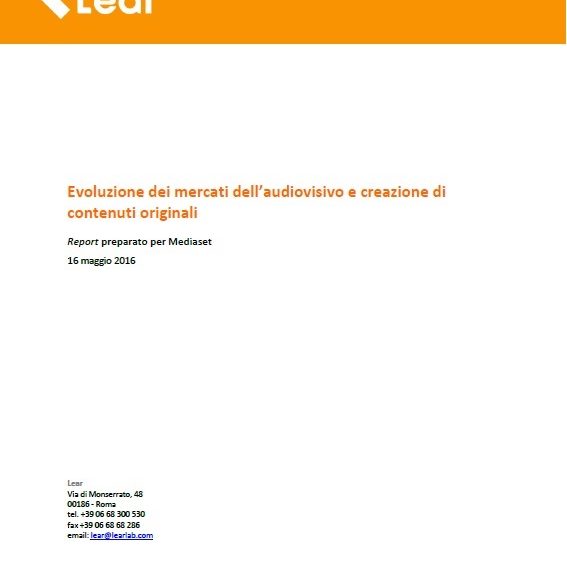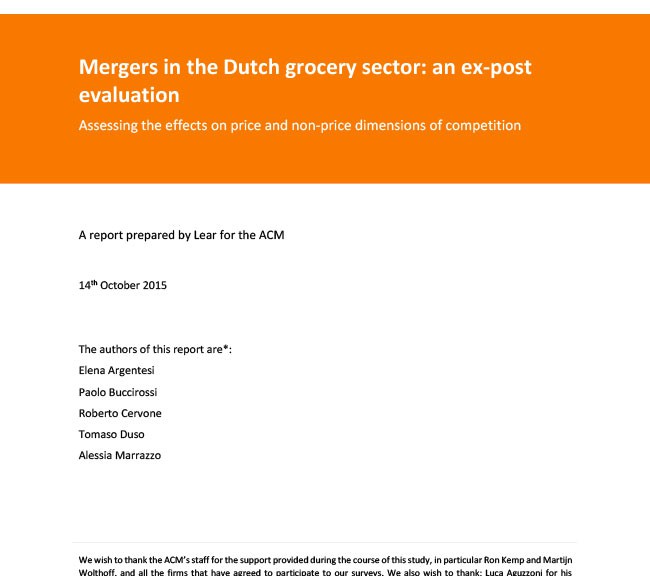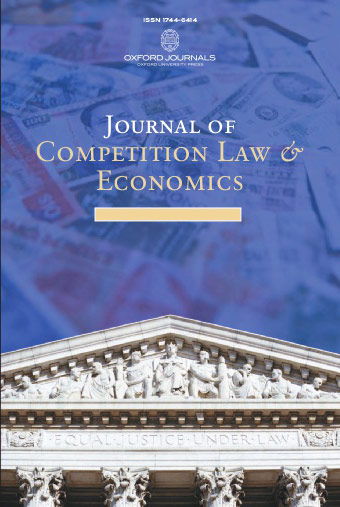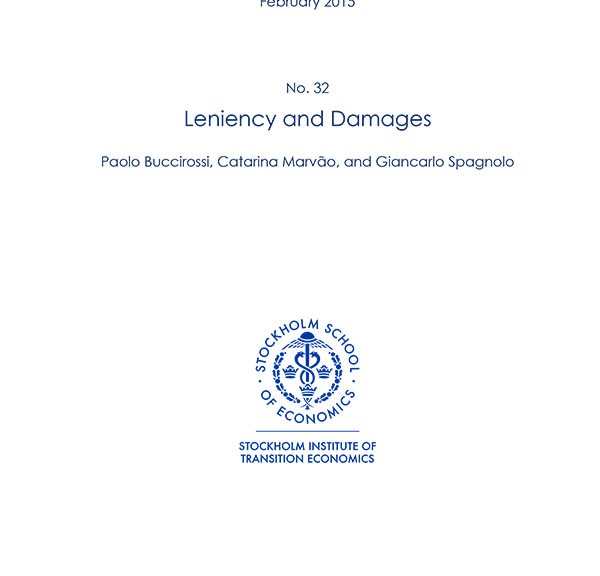It is often claimed that rewards for whistleblowers lead to fraudulent reports, but for several US programs this has not been a major problem. We model the interaction between rewards for whistleblowers, sanctions against fraudulent reporting, judicial errors, and standards of proof in the court case on a whistleblower’s allegations and the possible follow-up for fraudulent allegations. Balancing whistleblower rewards, sanctions against fraudulent reports, and courts’ standards of proof is essential for these policies to succeed. When the risk of retaliation is severe, larger rewards are needed and so are tougher sanctions against fraudulent reports. The precision of the legal system must be sufficiently high, hence these programs are not viable in weak institution environments, where protection is imperfect and court precision low, or where sanctions against false reporting are mild.
Archives
Leniency and Damages: Where Is the Conflict?
Damage actions may reduce leniency programs’ attractiveness for cartel participants if their cooperation with the competition authority increases the chance that the cartel’s victims will sue them. This apparent conflict between public and private antitrust enforcement led to calls for a legal compromise. We show that the conflict is due to the legislation, and a compromise is not required: limiting the victims’ ability to recover their losses is not necessary to preserve the effectiveness of leniency programs and may be counterproductive. We show that damage actions will improve their effectiveness if the civil liability of the immunity recipient is minimized and full access to all evidence collected by the competition authority is granted to claimants. Our results help compare the EU and US damage systems and directly question the 2014 EU directive that tries to protect leniency programs’ effectiveness by restricting access to leniency statements in subsequent damage actions.
Merger Policy in Digital Markets: An Ex Post Assessment
This paper presents a broad retrospective evaluation of mergers and merger decisions in markets dominated by multisided digital platforms. First, we document almost 300 acquisitions carried out by three major tech companies—Amazon, Facebook, and Google—between 2008 and 2018. We cluster target companies on their area of economic activity providing suggestive evidence on the strategies behind these mergers. Second, we discuss the features of digital markets that create new challenges for competition policy.
By using relevant case studies as illustrative examples, we discuss theories of harm that have been used or, alternatively, could have been formulated by authorities in these cases. Finally, we retrospectively examine two important merger cases, Facebook/Instagram and Google/Waze, providing a systematic assessment of the theories of harm considered by the UK competition authorities as well as evidence on the evolution of the market after the transactions were approved. We discuss whether the competition authority performed complete and careful analyses to foresee the competitive consequences of the investigated mergers and whether a more effective merger control regime can be achieved within the current legal framework.
Ex-post Assessment of Merger Control Decisions in Digital Markets
The Competition and Markets Authority appointed Lear to carry out a study aimed at looking at four past merger decisions in the digital sector taken by the Office of Fair Trading and the Competition Commission (jointly, the “Authorities”).
The objective of the study was threefold:
▪ review merger cases undertaken by Competition Authorities and the relevant economic literature to identify which Theories of Harm (ToHs) have been typically pursued in relation to these mergers, how such ToHs have been evaluated and which relevant economic features should be taken into account when evaluating mergers in the sector;
▪ assess the UK cases and evaluate whether the decision that the Authorities have come to was reasonable based on the evidence that was, or would reasonably have been, available at the time;
▪ evaluate market evolution following the mergers to ascertain whether the merger has led to a detrimental outcome.
Western Balkans and the Design of Effective Competition Law: The Role of Economic, Institutional and Cultural Characteristics
The paper analyzes the optimal design of competition law in Western Balkan countries. It first identifies the “policy choice set”, i.e. the essential variables that define a competition policy regime; then considers how the optimal choice within the available options depends on a number of characteristics and finally examines where the Western Balkan economies stand in terms of these characteristics. This comparison allowed the authors to derive policy implications on how competition policy in Western Balkan countries should be designed and implemented.
The study “Western Balkans and the Design of Effective Competition Law: The Role of Economic, Institutional and Cultural Characteristics” has been published by Springer in the book “Competition Authorities in South Eastern Europe”, edited by Boris Begović and Dušan V. Popović.
Economic impact of competition policy enforcement on the functioning of telecoms markets in the EU
The report empirically investigates the causal effects of three decisions adopted by the European Commission on the performance of telecoms markets, namely the T-Mobile/Orange merger in the UK mobile markets, a state aid decision in the German fixed broadband market and an abuse of dominant position by Telekomunikacja Polska in the Polish fixed market. The report also provides a descriptive analysis on the evolution of competition policy enforcement in the telecoms markets and the concurrent trends in markets’ performance.
Evoluzione dei mercati dell’ audiovisivo e creazione di contenuti originali
L’evoluzione delle tecnologie digitali e la penetrazione della banda larga hanno determinato un significativo cambiamento nei mercati italiani dell’audiovisivo, attraverso lo sviluppo di nuove modalità di fruizione.
L’obiettivo di questo studio, commissionato da Mediaset, è di ripercorrere i mutamenti che hanno recentemente caratterizzato il sistema audiovisivo nazionale e valutare le conseguenze di tale evoluzione sul meccanismo di creazione di contenuti originali. Nello specifico, lo studio analizza i cambiamenti avvenuti nei mercati dell’audiovisivo negli ultimi anni e confronta i regimi regolamentari cui sono soggetti i broadcaster e gli altri operatori (OTT). Si descrive il fenomeno degli usi non autorizzati di contenuti protetti da diritto d’autore e se ne analizza l’impatto sui produttori. Si evidenzia, infine, come l’asimmetria nella regolamentazione e l’inefficacia degli stati nel tutelare i diritti d’autore abbiano favorito la crescita proprio di quegli operatori che non investono nella produzione di contenuti originali.
Merger in the Dutch grocery sector: an ex-post evaluation
This study evaluates the appropriateness of some merger decisions undertaken by the Autoriteit Consument & Markt (ACM) in the Dutch grocery shopping sector. We analyze three related merger decisions published between 2009 and 2012 and involving major supermarket chains.
We conduct both a qualitative and a quantitative analysis and examine the effect of the mergers on different dimension of competition: price, product variety, provision of qualitative and ancillary services.
We estimated the effect on prices under both the assumption of local and national pricing. The results of our quantitative and qualitative analyses suggest that the three mergers did not impact prices. The effect on product variety, however, are less reassuring. According to our analyses, the last of the three mergers negatively impacted the depth of the product assortment offered by the merging parties and consumers had less choice.
We corroborate these findings by also econometrically testing if the issuance of the divestitures alleviated the negative effects on variety. The results obtained suggest that the divestiture only partially outweighed the reduction in variety caused by the mergers and that additional divestitures could have been needed.
Vertical restraints on e-commerce and selective distribution
This paper discusses whether, when manufacturers choose to adopt a selective distribution system, vertical restraints imposed on electronic commerce (e-commerce) may work in the interest of consumers or have anticompetitive consequences that require an antitrust intervention. The paper presents the basic economic concepts that apply to vertical restraints, and identifies the efficiency reasons and the anticompetitive effects that may motivate their adoption. Then, the relevant economic literature is surveyed in order to understand how e-commerce influences retail competition, taking into account its impact on search costs, distribution costs, and information asymmetry. The paper examines the legal treatment of vertical restraints on e-commerce in the case of selective distribution; it summarizes the position expressed by the European Commission in the Block Exemption Regulation and the accompanying guidelines, and then discusses some cases decided by National Competition Authorities, National Courts, and the European Courts. From this overview emerges the risk that the antitrust analysis of vertical restraints on e-commerce in selective distribution systems may be guided by presumptions that do not have solid economic grounds. The paper argues that it is unwise to adopt a formal approach for the legal assessment of these vertical restraints and calls for a more economic effect-based approach.
Leniency and Damages
Modern antitrust engenders a possible conflict between public and private enforcement due to the central role of Leniency Programs. Damage actions may reduce the attractiveness of Leniency Programs for cartel participants if their cooperation with the competition authority increases the chance that the cartel’s victims will bring a successful suit. A long legal debate culminated in a EU directive, adopted in November 2014, which seeks a balance between public and private enforcement. It protects the effectiveness of a Leniency Program by preventing the use of leniency statements in subsequent actions for damages and by limiting the liability of the immunity recipient to its direct and indirect purchasers. Our analysis shows such compromise is not required: limiting the cartel victims’ ability to recover their loss is not necessary to preserve the effectiveness of a Leniency Program and may be counter-productive. We show that damage actions will actually improve its effectiveness, through a legal regime in which the civil liability of the immunity recipient is minimized (as in Hungary) and full access to all evidence collected by the competition authority, including leniency statements, is granted to claimants (as in the US).

